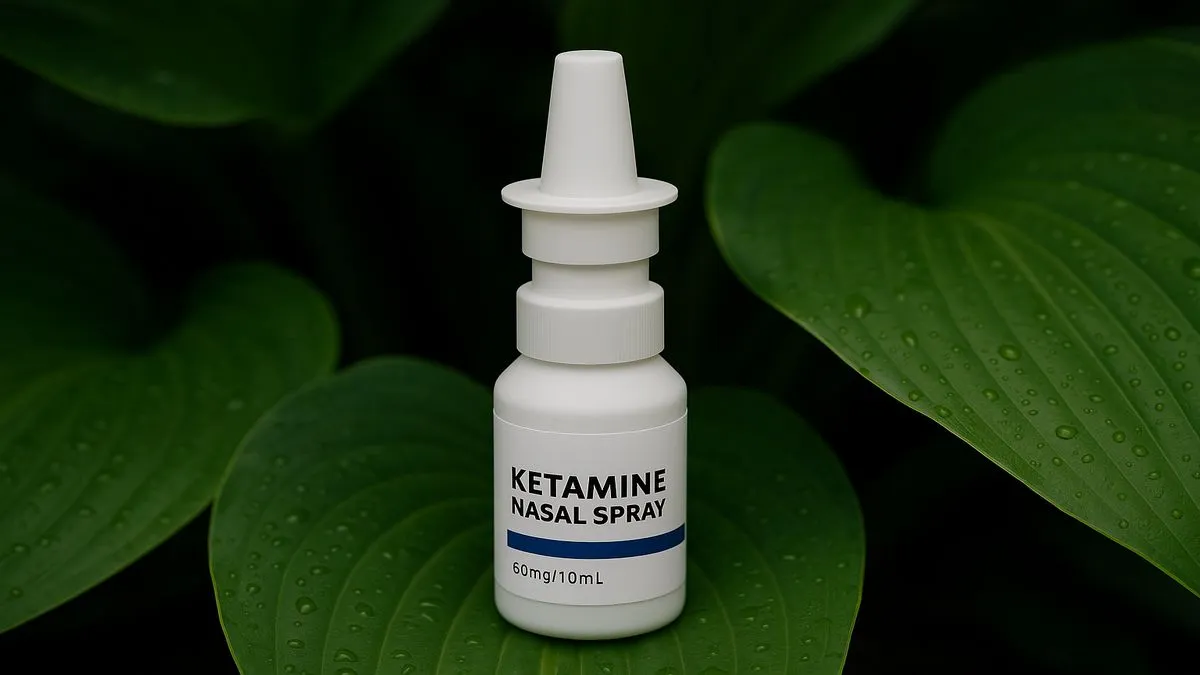HEALTH AND FITNESS
Ketamine Nasal Spray: A New Option for Treating Resistant Depression

What Is Resistant Depression?
Depression is a condition that extends beyond simple sadness or a rough patch. For many, it’s a persistent challenge affecting sleep, energy, relationships, and even their capacity to function day-to-day. Standard treatment typically starts with talk therapy and antidepressant medications. But when at least two different antidepressants, each at an adequate dose and taken for a suitable period, fail to ease symptoms, a diagnosis of treatment-resistant depression (TRD) is considered. Researchers estimate that roughly 30% of those living with major depressive disorder may experience this frustrating reality. People struggling with TRD often find themselves in a cycle of brief improvements followed by relapse, leading to feelings of hopelessness and isolation.
The causes of TRD are as varied as the people it affects. Genetics, chronic stress, underlying medical issues, and even unrecognized substance use can all play roles in why a person does not respond as expected to treatment. The widespread impact of TRD has led to an urgent call for new, evidence-based solutions. Treatments such as Spravato treatment, which involves a nasal spray form of esketamine, represent a modern shift in the landscape of depression care. Such therapies bring renewed hope for those who have spent years cycling through medications with only minor or temporary relief, and encourage patients and providers alike to approach care with a sense of optimism rather than resignation.
Introduction to Ketamine Nasal Spray
Over recent years, ketamine—a medication initially developed more than five decades ago as a safe anesthetic—has emerged as a revolutionary option for those with persistent, hard-to-treat depression. The focus has turned to a specific form, the nasal spray, because it provides a less invasive and more convenient alternative to intravenous infusions. With the approval of ketamine-based nasal sprays for major depressive disorder that hasn’t responded to conventional care, new doors have opened for patients caught in cycles of failed treatments. This innovation is not just about a new drug; it’s about giving people a chance at rapid relief and improved functioning when little else has worked. Leading organizations, such as the National Institute of Mental Health, highlight the growing body of evidence supporting these advances, noting significant symptom improvement in many participants of primary studies.
The introduction of the ketamine nasal spray has been welcomed by many clinicians who work with patients at risk of severe depressive episodes or suicide. The speed at which relief occurs—sometimes within hours—sets it apart from most conventional therapies. For those who have tried and failed other treatments, the nasal spray offers a practical and user-friendly method, administered under the careful supervision of trained healthcare professionals. It is not just this medication, but also the approach: a focus on quick stabilization, followed by support and monitoring to help maintain gains and restore quality of life.
How Does Ketamine Nasal Spray Work?
While many antidepressants target serotonin, norepinephrine, or dopamine systems, ketamine takes a very different route. Ketamine affects the brain’s glutamate system, stimulating the growth of new synaptic connections between nerve cells. Glutamate is the most common neurotransmitter in the brain, deeply involved in learning, memory, and overall neural communication. The rapid effects of ketamine are believed to result from this neuroplastic action, allowing the brain to “rewire” circuits that are dulled by depression.
Instead of waiting weeks to see effects, people using ketamine nasal spray may notice improvements within a matter of hours or days—a critical advantage for those facing debilitating symptoms or even suicidal thoughts. These rapid changes are particularly valuable in crises, giving time for other therapies, such as psychotherapy and ongoing medications, to have their desired effect. By enhancing neuroplasticity, ketamine also makes the brain more receptive to positive experiences. It potentially supports better outcomes with other concurrent treatments. This means the difference between ongoing struggle and a more hopeful path for countless individuals.
Clinical Evidence and Real-World Results
Research conducted over the last decade has established ketamine nasal spray as an exciting therapeutic option for TRD. Clinical trials have shown that this medication often leads to noteworthy symptom relief among individuals who had not responded to other approaches. One controlled study indicated up to 70% of participants experienced at least a moderate improvement in depressive symptoms when using esketamine nasal spray. The benefits continue to be replicated in diverse populations across the globe, further strengthening its standing in the field.
The transition from research to real-world application is also telling. Reports from psychiatrists and patients in community practice settings echo the success of clinical trials. As one recent survey published in Psychiatric Times illustrates, manasal spray users describe improved mood stability, increased motivation, and renewed hope after years of stagnation. It’s essential to note that individual responses can be variable—what works well for some may not be as effective for others. This variability underscores the need for a carefully considered and personalized treatment plan, monitoring for both results and side effects at every stage.
Potential Benefits for Patients
The most striking feature of ketamine nasal spray is its unprecedented speed of action. For those who have grown weary of waiting, sometimes months, for traditional medications to work, this treatment offers the possibility of relief within days—even hours. The advantages go beyond symptom reduction:
- Rapid alleviation of core symptoms, such as persistent sadness, hopelessness, fatigue, and trouble concentrating, is often reported after the initial sessions.
- A substantial drop in the intensity and frequency of suicidal thoughts, offering a critical lifeline for individuals in acute need of help.
- A ripple effect on daily life, where improved mood can drive increased social interaction, better job performance, and stronger relationships.
- There is a restored sense of hope, especially in people who have spent years losing confidence in the possibility of meaningful recovery.
Many patients describe re-discovering joy in activities that had long lost their appeal, and families report recognizing a returning “spark” in their loved ones. These real, human outcomes remind us that the impact of new treatments goes well beyond symptom scores alone.
Considerations and Safety
While the benefits are compelling, ketamine nasal spray also warrants a careful focus on safety. It is never administered without direct medical oversight because the side effects, though typically short-lived, can include dizziness, feeling disconnected (dissociation), increased blood pressure, and mild hallucinations. Healthcare staff closely monitor these reactions, remaining present for at least two hours after each treatment to evaluate vital signs and the patient’s sense of well-being.
Doctors approach this therapy using a structured protocol: doses are carefully titrated, and most patients start with weekly appointments that gradually taper as stability improves. Some individuals may experience headaches, nausea, or temporary confusion, but these are generally mild and pass quickly. However, those with uncontrolled hypertension, certain psychiatric conditions (like psychosis), or a history of problematic substance use are usually steered away from ketamine-based options. As researchers continue to study the long-term effects, close follow-up and assessment are vital to maximizing gains and minimizing risk over time.
Who Might Be a Good Candidate?
Eligibility for ketamine nasal spray is determined on a case-by-case basis, with most candidates being adults diagnosed with moderate-to-severe depression who have not responded well to other antidepressants. A comprehensive evaluation is essential, taking into account current health, psychiatric history, medication use, and any risk factors like high blood pressure or history of substance misuse.
This treatment is typically reserved for those who have explored multiple avenues—psychotherapy, medication combinations, and sometimes even electroconvulsive therapy (ECT)—without finding sustained relief. For suitable patients, the nasal spray offers the promise of symptom reduction and a renewed connection to the people and activities that bring meaning to life.
Questions to Ask Your Provider
Before starting ketamine nasal spray treatment, it’s essential to have an open dialogue with your mental health provider. Some helpful questions to discuss include:
- Am I a good candidate for ketamine nasal spray, and what makes it the right choice for my depression?
- Considering my unique history, what are the risks, benefits, and alternatives?
- How will I be monitored during and after each treatment session? What should I expect in terms of side effects?
- What kind of results should I realistically expect, and in what timeframe?
- What other treatments or supports are available for me if this approach is ineffective?
Every person’s journey with depression is a deeply personal one, and the partnership between patient and provider remains central to success. Ketamine nasal spray marks an exciting advance in the treatment of resistant depression—one that brings hope, but also calls for a thoughtful, individualized approach informed by both scientific evidence and personal needs.
Should you wish to read more, visit our blog page. We’ve got more topics for you!
-

 BIOGRAPHY7 months ago
BIOGRAPHY7 months agoBehind the Scenes with Sandra Orlow: An Exclusive Interview
-

 HOME1 year ago
HOME1 year agoDiscovering Insights: A Deep Dive into the //vital-mag.net blog
-

 HOME1 year ago
HOME1 year agoSifangds in Action: Real-Life Applications and Success Stories
-

 BIOGRAPHY1 year ago
BIOGRAPHY1 year agoThe Woman Behind the Comedian: Meet Andrew Santino Wife




























